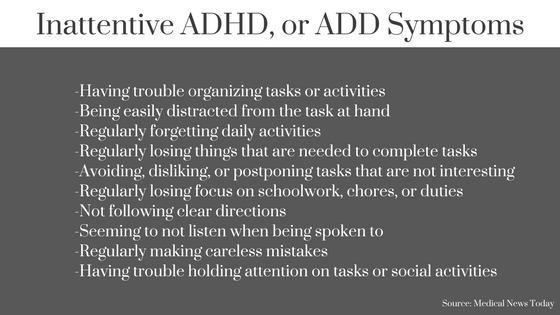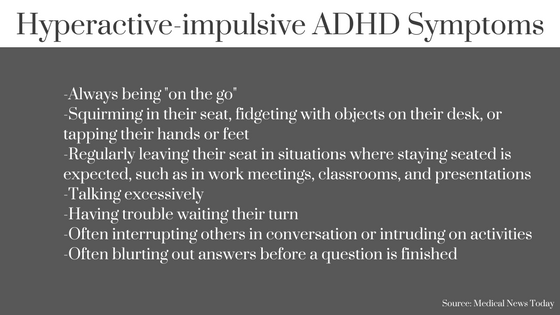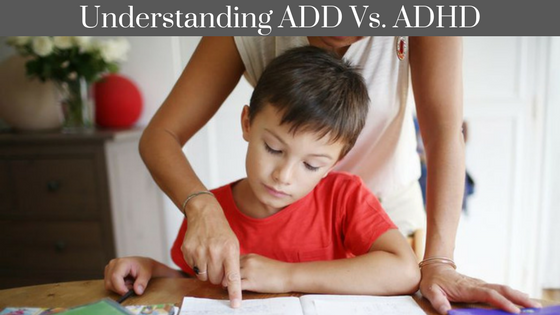Understanding the difference between ADD & ADHD can be challenging for parents. For example, one of the common misconceptions of ADD & ADHD is that children with the disorder are loud & hyperactive. Although this may be true in some cases, this is not necessarily a sign that your child has these conditions.
So, how do you work towards finding out which of these conditions your child may be struggling with?
Start by Understanding How ADD & ADHD are Different
It’s important to note these two terms (ADD, ADHD) are used interchangeably and the once used term ADD is now recognized by The American Psychiatric Association as ADHD.
ADHD
Medicine.net states that ADHD is a common disorder most commonly affecting children and adolescents. Typically, children who suffer from this disorder have a hard time concentrating, trouble following directions and may seem frustrated with completing simple tasks. It’s important to understand that symptoms of this condition can vary by gender and by person.
Did you know?
Recent studies show that 1 in 20 children are affected by ADHD
There are an estimated 6.4 million diagnosed children in the United States, according to the Centers for Disease Control and Prevention
There are three different types of ADHD.
- Inattentive
Inattentive ADHD is what’s usually meant when someone uses the term ADD. This means a person shows enough symptoms of inattention (or easy distractibility) but isn’t hyperactive or impulsive.

- Hyperactive/impulsive
This type occurs when a person has symptoms of hyperactivity and impulsivity but not inattention.

- Combined
Combined ADHD is when a person has symptoms of inattention, hyperactivity, and impulsivity.
Treatment for ADHD
Keep in mind that seeing symptoms alone is not enough to diagnose your child with any of the above conditions.
Several factors must be taken into consideration before diagnoses can be given:
Consistency in an environment- If you see one or more of these signs present in your child, ask yourself the question is it just at home? Or is it prevalent in most environments too?
Timeframe: Children go through phases and have bad days. Has your child had these symptoms for six months or more?
The severity of symptoms: Consider the developmental stage of your child and not just how common an issue is present but also the degree of how intense it may be. For example, if your child has behaviors while doing their homework how severe is that reaction on a regular basis?
Emotional state: If your child is having a hard time listening to you, is it because they’re rebelling or is it because they have some emotional issues to work through or should they be tested for ADHD? In any of these cases, seeing a psychologist or doctor can help you decipher what it is that your child needs.
Another psychological disorder present- Some mood disorders, anxiety disorders, personality disorders, and dissociative disorders can all show similar symptoms to ADD or ADHD.
It’s pertinent that If you think your child may have ADHD then consult your pediatrician and contact your psychologist to complete diagnostic testing.

